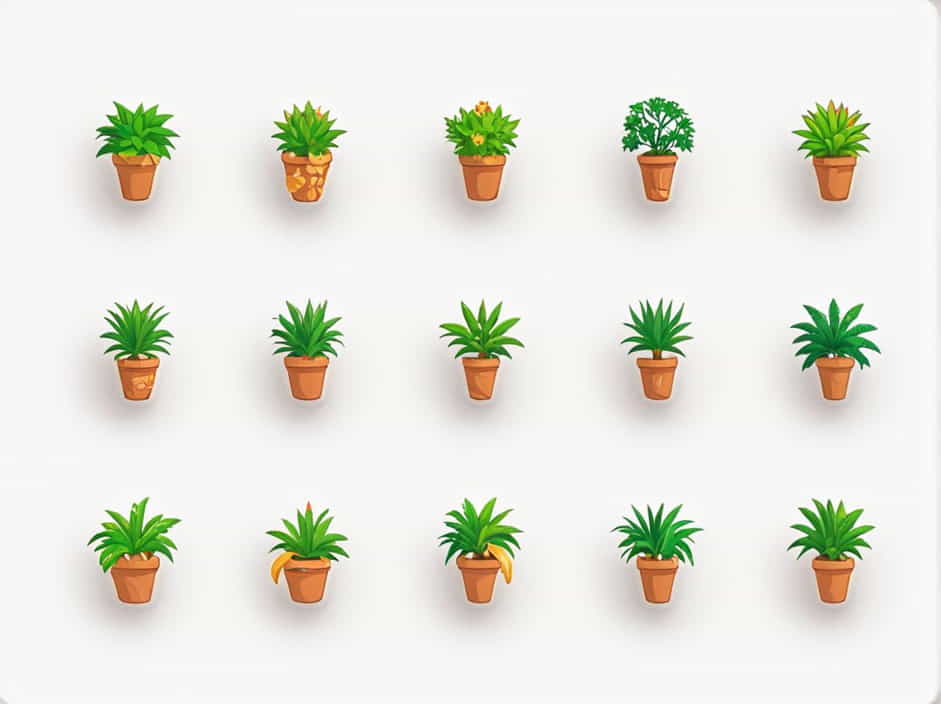The Mesozoic Era, often called the ‘Age of Dinosaurs,’ was also a crucial period in the evolution of plants. Lasting from about 252 to 66 million years ago, this era saw the rise of many plant groups that would shape Earth’s ecosystems for millions of years.
In this topic, we’ll explore the dominant plants of the Mesozoic Era, their adaptations, and their role in prehistoric environments.
1. The Mesozoic Era: An Overview
The Mesozoic Era is divided into three periods:
- Triassic Period (252-201 million years ago) – Early plants recovered after a mass extinction.
- Jurassic Period (201-145 million years ago) – Gymnosperms dominated, and ferns thrived.
- Cretaceous Period (145-66 million years ago) – Flowering plants (angiosperms) evolved.
During this era, Earth’s climate was warmer and more humid, creating lush landscapes filled with ferns, cycads, conifers, and the first flowers.
2. Dominant Plant Groups of the Mesozoic Era
Several plant groups thrived during the Mesozoic Era, shaping the ecosystems of the time.
A. Ferns (Pteridophytes)
Ferns were among the most common plants of the Mesozoic Era. They reproduced using spores instead of seeds, allowing them to spread quickly.
Key Features of Mesozoic Ferns:
- Grew in wet, humid environments like swamps and riverbanks.
- Included tree-sized ferns that provided shelter for dinosaurs.
- Survived multiple extinctions and are still found today.
Ferns were a major food source for herbivorous dinosaurs like Iguanodon and Stegosaurus.
B. Cycads (Cycadophyta)
Cycads looked like small palm trees with thick, woody trunks and stiff, green leaves.
Characteristics of Cycads:
- Thrived in warm, tropical regions.
- Grew slowly but lived for hundreds of years.
- Had large, cone-like structures for reproduction.
Cycads were one of the most common plants in the Jurassic Period, often forming dense forests. Dinosaurs like Triceratops and Brachiosaurus likely fed on cycad leaves.
C. Conifers (Gymnosperms)
Conifers were the dominant trees of the Mesozoic Era, much like they are in modern boreal forests.
Types of Mesozoic Conifers:
- Araucaria (ancestors of today’s monkey puzzle trees).
- Ginkgo trees, which still exist today.
- Podocarps, an ancient group of conifers.
Conifers had needle-like leaves that helped them survive in different climates. Their seeds were exposed in cones, making them gymnosperms (seed-producing plants without flowers).
Large dinosaurs, such as Brachiosaurus, likely used their long necks to feed on conifer branches.
D. Ginkgo Trees (Ginkgophyta)
Ginkgo trees first appeared in the Jurassic Period and have changed very little since then.
Ginkgo Tree Characteristics:
- Fan-shaped leaves that turn yellow in autumn.
- Resistant to pests and environmental changes.
- Produced fleshy seeds instead of flowers.
Today, the Ginkgo biloba tree is the last surviving species of this ancient group.
3. The Evolution of Flowering Plants (Angiosperms)
The most significant change in plant life during the Mesozoic Era was the appearance of flowering plants (angiosperms) in the Cretaceous Period.
A. The First Flowering Plants
Angiosperms evolved around 130 million years ago, changing ecosystems forever.
Early Angiosperms Included:
- Magnolias – Early, primitive flowers with simple structures.
- Water Lilies – One of the first aquatic flowering plants.
- Fig Trees – Produced fleshy fruits that attracted herbivores.
These plants spread quickly because their flowers attracted insects for pollination, unlike gymnosperms that relied on the wind.
B. How Angiosperms Changed the Environment
Once angiosperms appeared, they rapidly replaced ferns and cycads as the dominant plants.
Angiosperms Offered Several Advantages:
- Faster Growth – They matured quickly compared to cycads and conifers.
- Diverse Shapes & Sizes – Allowed them to grow in different environments.
- Fruit Production – Helped them spread seeds efficiently.
These plants became essential food sources for herbivorous dinosaurs like Hadrosaurus and Triceratops.
4. How Did Mesozoic Plants Influence Dinosaurs?
Plants were the foundation of Mesozoic food chains. They influenced dinosaur diets, migration patterns, and evolution.
A. Herbivorous Dinosaurs and Their Diets
Different types of dinosaurs adapted to eat specific plants:
| Dinosaur | Preferred Plants | Feeding Adaptations |
|---|---|---|
| Brachiosaurus | Conifers, cycads | Long neck for reaching tall trees |
| Triceratops | Ferns, cycads, flowering plants | Sharp beak for cutting tough leaves |
| Hadrosaurus | Flowering plants | Cheek teeth for grinding food |
Herbivorous dinosaurs played a key role in spreading plant seeds, much like modern mammals do today.
B. The Role of Insects in Mesozoic Plant Life
Insects like beetles, wasps, and early bees helped pollinate Mesozoic flowers. This led to the rapid spread of angiosperms, allowing them to overtake older plant groups.
Dinosaurs and insects shaped the evolution of plants, creating a dynamic ecosystem.
5. The End of the Mesozoic Era: Plant Extinction and Survival
The Mesozoic Era ended 66 million years ago with a mass extinction caused by an asteroid impact. This event wiped out many plant species, but some survived.
A. Plants That Went Extinct
- Many cycads and ferns disappeared.
- Some conifer species were lost.
B. Plants That Survived
- Ginkgo trees survived and still exist today.
- Conifers continued to thrive in cooler climates.
- Flowering plants (angiosperms) became the dominant plant group.
The extinction of dinosaurs allowed mammals to rise, and with them, new ecosystems based on flowering plants.
6. The Legacy of Mesozoic Plants
The Mesozoic Era was a time of incredible plant evolution, from the dominance of ferns and conifers to the rise of flowering plants. These plants shaped dinosaur diets, influenced ecosystems, and laid the foundation for modern forests.
Many plants from this era still exist today, including Ginkgo trees, conifers, and some ferns. While dinosaurs may be extinct, the plants they lived among continue to thrive, reminding us of Earth’s ancient past.
